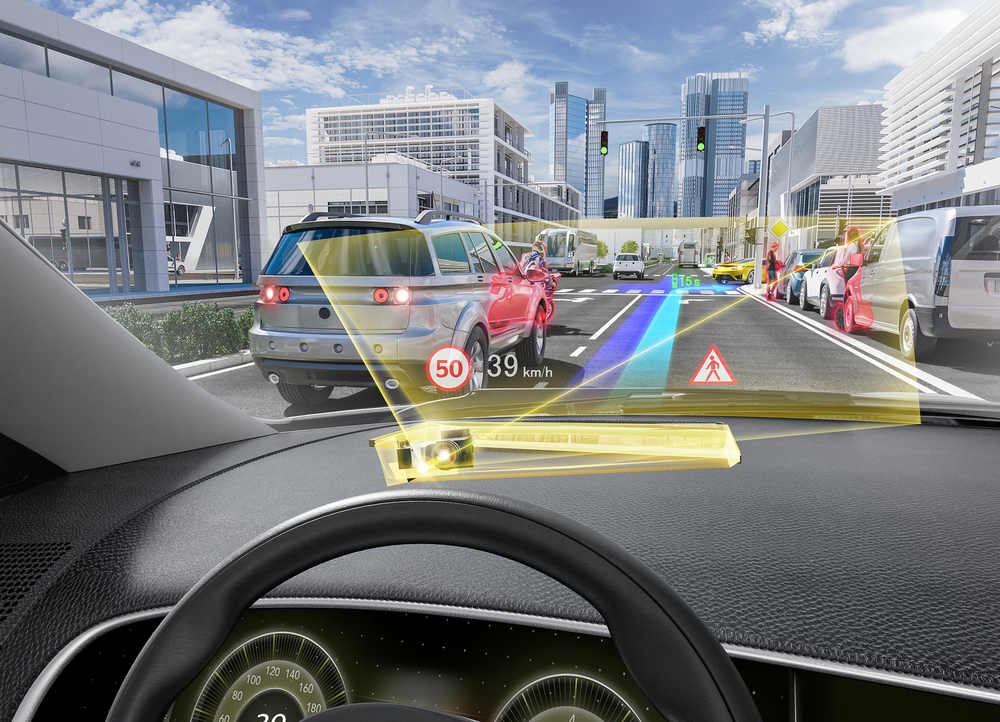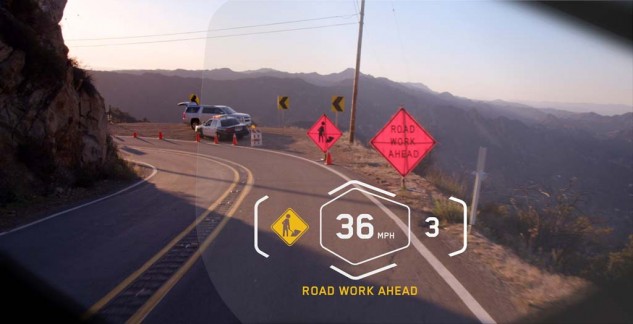DigiLens raised an additional $22 million in a Series B investment round from Sony, Foxconn, Continental and Panasonic, along with venture investors including Alsop Louie Partners, Bold Capital, Nautilus Venture Partners and Dolby Family Ventures.
Gilman Louie, founder and managing director of Alsop Louie Partners, said the next generation display technology will be glass.
“Data on glass is a critical capability for augmented and mixed reality applications such as gaming, navigation, telepresence, education, industrial, medical and military,” Louie said. “Data on glass is being revolutionized by DigiLens’ full-color and wide field of view optics and AR-HUD breakthroughs.”
Jonathan Waldern, founder and CEO of DigiLens, told UploadVR his company will leverage these strategic relationships to bring to market several augmented reality displays and sensors for enterprise, consumer and transportation applications.
“The round is relatively modest and within that context, we already have these partnerships in place and the contractual agreements go beyond the investments,” Waldern said. “The key point is this helps us with the generic expansion of our business, but it also leaves us in a strong financial position to be alongside these new AR products over the longer term.”
DigiLens will make a “modest increase” in engineering staffing, but the company is also benefiting from the strategic relationships with these partners.
“We’re working on the partner development teams already and that opportunity is priceless in allowing us to push forward with AR technology and displays,” Waldern said.
Waldern said DigiLens has been developing the optical materials and processes to manufacture precision diffractive optics by photographically printing (not etching) the nanostructures. These electrically “Switchable Bragg Gratings” (SBG) allow for a higher efficiency and a wider field of view display in addition to the “printable” manufacturing benefit, according to the company.
“We started off in the aerospace head-up display (HUD) area and bootstrapped the company by developing material for aerospace and military applications,” Waldern said. “Having brought that to market and revolutionized the form factor of the AeroHUD with Rockwell Collins, last year we moved on to applying this technology to auto HUD applications.”
A conventional automobile HUD uses refracted objects like mirrors and lenses. That takes up a lot of space. For example, the projection system in the BMW 7 Series consumes over nine liters of space. Using its diffractive waveguide optics, the company slimmed the HUD down to a small form factor plate that offers a 15 degree to 20 degree field of view versus the standard 7 degree or 8 degrees.
“The HUD is the central human-computer interface and when you look at the instruments and dials on dashboards that have been around for hundreds of years, it’s obvious we need to move on,” Waldern said. “Having a full color HUD will harness the value of all those safety devices for the user and provide instant feedback to the driver.”
Both Continental, which is a top HUD supplier for many car companies, and Panasonic, which has a huge radio and cockpit instrumentation business with companies like GM and Tesla, will help distribute DigiLens’ technology.
“We believe augmented reality HUDs will not only enhance driver safety, but also accelerate automated driving acceptance by enhancing the driver’s confidence in what the car actually sees and knows,” said Helmut Matschi, head of the interior division at Continental, in a prepared statement. “The large AR-HUD display will help keep drivers safe by putting critical travel information at eye level and allowing them to see what the robot car sees.”
Waldern said it will be a few years before this Auto-HUD technology hits the consumer market because of strong regulatory and safety tests and procedures.
Looking even further ahead as autonomous cars become more mainstream, Walderns believes AR technology will play an important role in giving consumers confidence in handing the control of the vehicle over to a robot.
“Auto manufacturers are seeing a wide field of AR-HUD as an important confidence booster in providing visual feedback that the robot car is in control,” Waldern said. “Graphics will change on the HUD as it detects various things around you like a truck in your blind spot. Graphics reinforcement can make the transition from driver to car and back more seamless.”
After partnering with BMW last year on MotoHUD, DigiLens is preparing a roll out for its AR helmet technology in the second half of 2017. That technology brings the full instrumentation of the motorcycle into the field of view of the driver so he or she can theoretically do everything from take phone calls to play Pokemon Go while driving, although Waldern doesn’t recommend playing video games on the road.
“We’re seeing electric bikes and scooters coming through that will need these helmets, so it’s not just for motorcycles,” Waldern said.
DigiLens’ is also working on EyeHUD, which is an eyeglass version of the technology in a small form factor for AR smartglasses.
“We’re teaming with Sony in the wearable smartglass market because their group has been working on this for 10 years now,” Waldern said. “Sony showed Tom Hanks wearing AR glasses at CES five years ago. They have a clear corporate dedication to this technology.”
Hiroshi Mukawa, general manager of the AR Eyeglass Program at Sony, said in a prepared statement the use of DigiLens waveguide technology will help in developin cutting-edge lenses that are much thinner and more transparent than any smart glass on the market today. FoxConn is interested in eyeglass displays for next generation mobile devices, but Waldern said they’re also interested in how they can advance productivity through robotics in manufacturing.
“Augmented reality is a challenge, in part, because the devices are restrained by the laws of physics and not Moore’s Law,” said G. Chen, CTO at Foxconn, in a prepared statement. “We think diffractive optics holds the key to AR, but writing millions of tiny optic structures is best done photographically, using nano self-assembly, not expensive precision etching like HoloLens. We need to break the manufacturing price barrier. With DigiLens waveguide diffractive optics, they seem to have overcome the most nagging technical problems and we see a very bright future for them.”
Over the next couple years DigiLens AR technology will impact both the consumer and enterprise markets across multiple sectors.






























